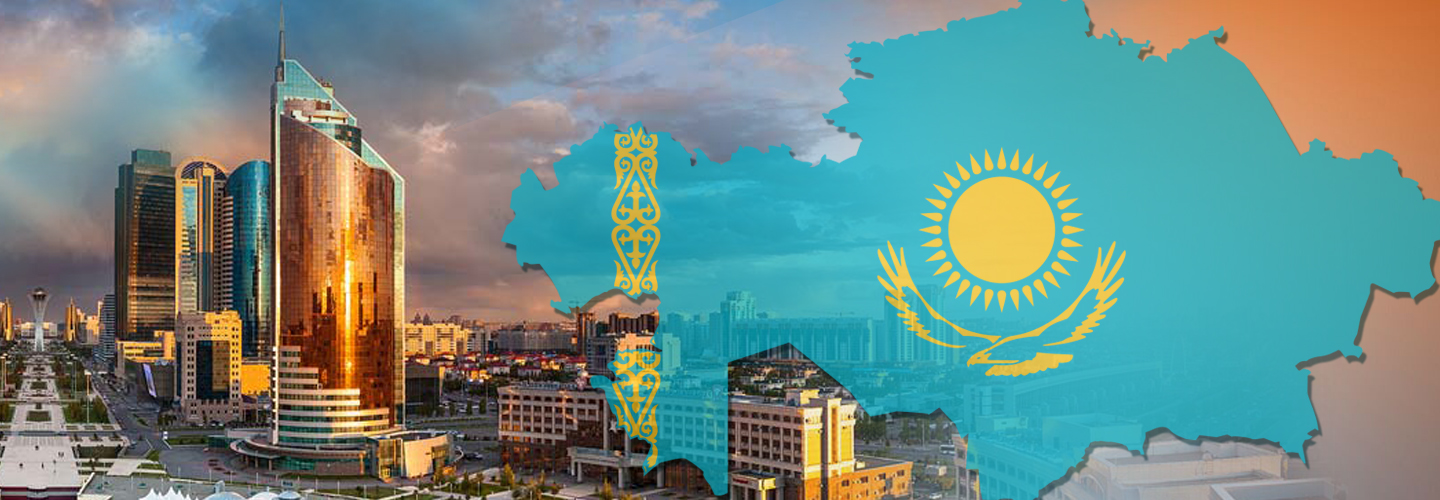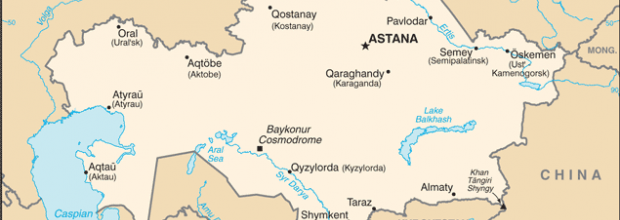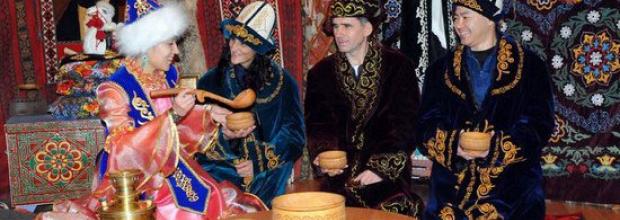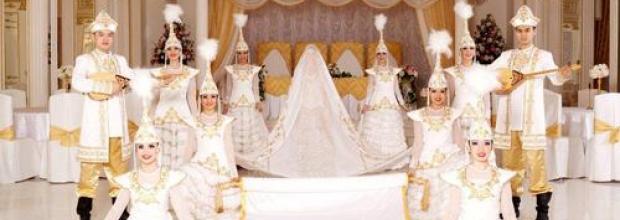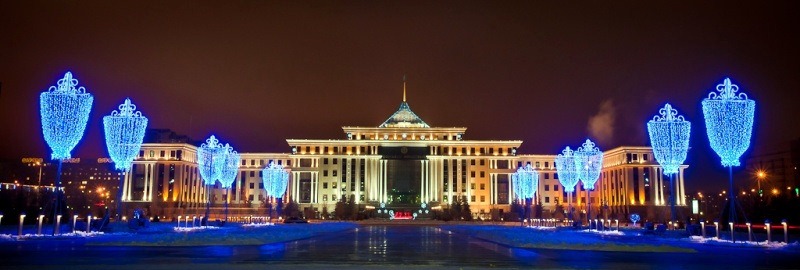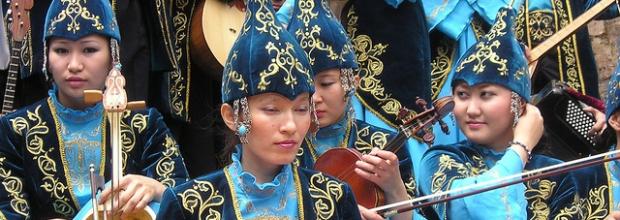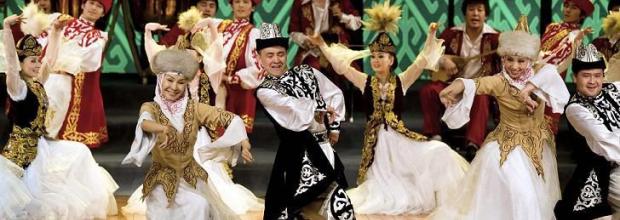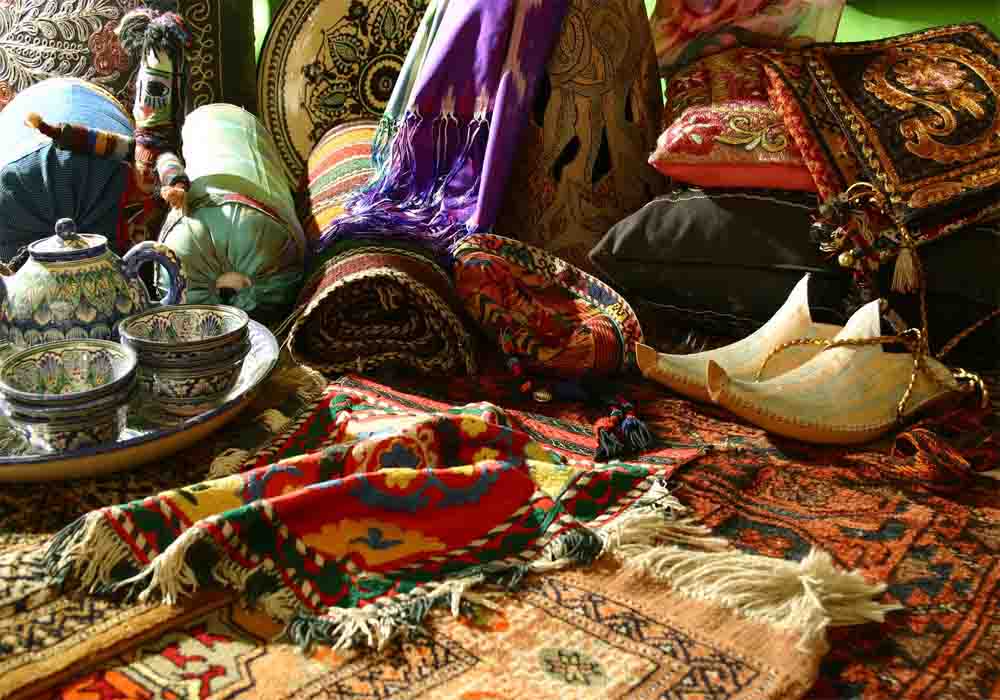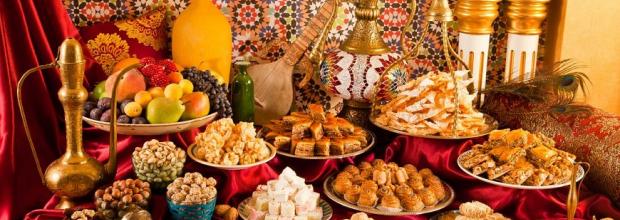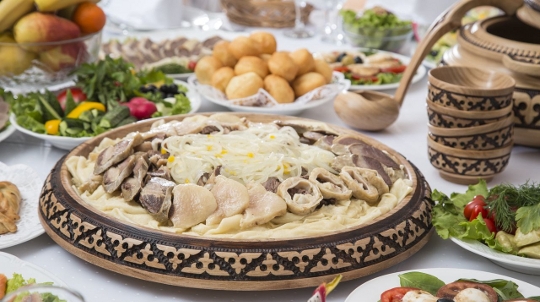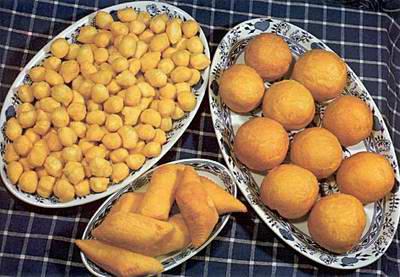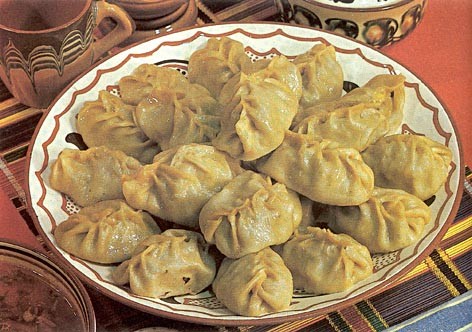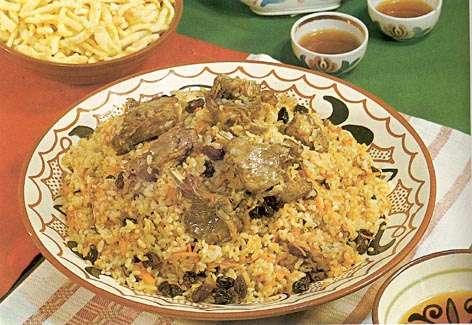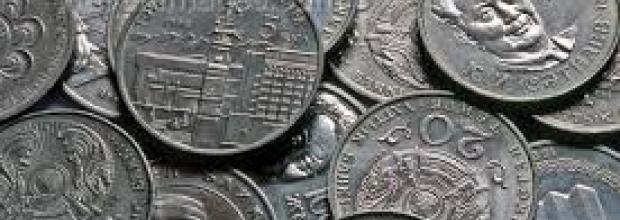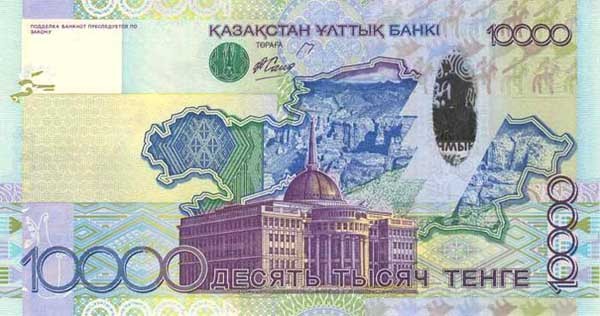The country's nomadic past is reflected in traditional clothing. Outerwear was historically made from leather, felt and fur. For indoor wear, beautiful satin gowns and trousers were richly decorated with embroidery that often included beads and precious stones.
Many varieties of these traditional costumes have withstood the test of time in beauty and style, which explains why they are still worn today despite their ancient fashion.
Kazakh traditional costumes were made from well-chosen materials and fashioned to suit the conditions of nomadic life and the ever-fluctuating weather conditions. It could stand hard frosts and the weary heat, Durable, comfortable, simple and practical best qualifies most of these clothes, Apart from the general men's, women's and children's wear, these national costumes fall into different classifications according to the occasion for which it is meant, namely outer garments and underclothes, occasional, seasonal and daily wear.
Daily wear really differed from the occasional in its simple design and fashion. Occasional, in contrast to daily wear, were complexly designed and tailored from valuable plush, velvet, crepe, broadcloth, satin, silk, brocade and other expensive fabrics. To make them more sophisticated, these clothes were artistically embroidered with gold and silver thread, heads, silk, and decorated with pearls, corals, and carnelian insertions. But the pains taken to do them are not in vain, for these clothes are fashioned to accentuate the beauty of these steppe inhabitants, give their natural appearance a special charm and make them more attractive and graceful.
Kazakh traditional clothes in traditional society as in any other cultures performed several functions. They were made from well-chosen materials and fashioned to suit the conditions of nomadic life and the ever-fluctuating weather conditions. They were durable, comfortable, simple and practical and, most importantly, they could stand hard frosts and the weary heat. Hence, the main pragmatic function of clothes is protection of man from influence of the natural environment. Besides, a traditional costume had the most important "identification" function - it could be possible to define not only the sex and age, but also social status, clan belonging of a person by how and what he/she wore.
In the middle - end of XIX century the Kazakhs still used traditional home-made materials - skins, leather, thick felt and other stuff for making outer clothes, footwear and head-dresses. But, later clothes were made of industrial cotton fabrics: printed cotton, coarse calico, calico, velveteen, and also were widely used fabrics of Central Asian domestic production - adras, bekasab, shai (shohi).
In XIX - beginning of XX cc. complex of men and women's clothes was quite steady and homogeneous all over the territory of Kazakhstan. Composition of the costume and principles of cut remained almost invariable. One could define social differences in clothes, first of all, in choice of material and in quality of making.
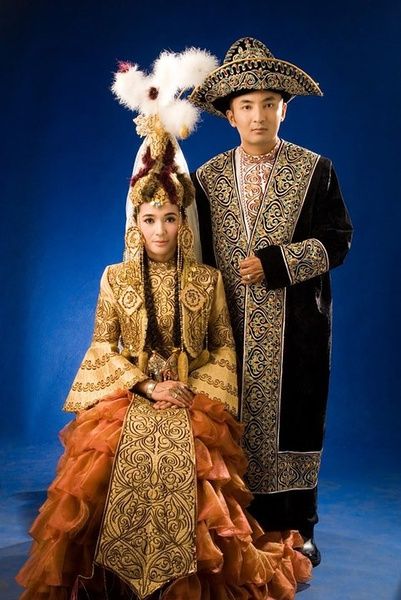
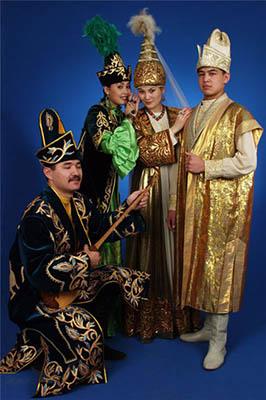
Men's clothes
Men would wear an underwear shirt (koilek) and trousers (shtany), outer shoulder loose clothes and wide trousers (sharovary). Outer loose clothes was worn outside trousers, flaps were wrapped from left to right. Trousers both underwear (dambal) and outer (shalbar) were made of the same on their cut, wide in the seat and in the waist, not long trouser-legs were usually tucked into the boots. Shalbar were made of camel homespun fabric, leather, suede, but from XIX century - of cotton fabric of dark colour or bright velvet.
Men wore not long (to the middle of the thighs or to the knees) loose clothes made on figure with flaps widening to the bottom. The most spread name of this clothes is kamzol (kamzol - men's sleeveless jacket) or beshpent (beshmet) . Man's sleeveless jackets were made of dense cotton fabrics, velveteen, woolen clothes, velvet, silk with long or short sleeves, but sometimes withoutsleeves at all. In the cold time of the year kamzol was worn on the thick lining of wool or fur. Kamzol was purely home clothes; leaving his aul man had to wear other clothes over it.
A loose long dressing-gown of straight cut with long and wide sleeves, called shapan is the most spread and required element of the outer clothes. Shapan was made of various fabrics: light and dense, one-colour and coloured. "Shapans" were warmed with a layer of wool or wadding. The Kazakhs wore dressing-gowns in all seasons of the year. In cold weather men put on several dressing-gowns. But well-to-do Kazakhs wishing to underline their status even in warm time of the year wore 2-3 dressing-gowns, moreover they put on the most expensive shapan over them.
One of the most ancient form of the clothes is kupi - a kind of outer warm clothes - made of camels and sheep's wool which got tangled with natural way.
Usual winter clothes were uncovered sheep-skin coats - ton. Such coats were made of tanned sheepskin with wool inside. More well-to-do Kazakhs wore covered fur coat ishik of value sorts of fur. Ishik was covered with cloth, velvet, sateen.
Leather belts and stuff (or made of cloth) sashes (girdles) were a required part of the man's costume. Leather belts kise with hang- ing-up-small bags (okshantai), scabbards and snuff-boxes, often were decorated with plaques which were made of iron, brass, copper, sometimes were covered with silver, nielloed with design and chases. Such belts were required belonging of smart clothes of a Kazakh - warrior, hunter and cattle-breeder.
Men constantly, even at home wore a head-dress. A round little cloth cap - takiya/kepesh was required. Until the middle of XIX century the Kazakhs wore high skull-caps with a pointed top, gradually a skull-cap with a plane top made of four three-cornered gores or cut out in the form of circle became usual. Upper head-dresses were made of thick felt and fur. In summer the Kazakhs wore light felt hats (kalpak) and a cap with a fur edging (borik) , in winter were put on caps of special cut (tymak or malakai). Tymak was made with a crown and four large blades, cut out of thick felt and covered with fabric. Blades were edged with fur.
Fox fur was considered more prestigious for malakhai. The cut of tymak had regional peculiarities, by it you could judge about the Kazakh's clan belonging. In XIX century the Kazakhs of the Middle and Junior zhuz still wore an ancient head-dress bashlyk (dalbai, zhalbagai ,dalbagai, kulepara) made of camel cloth and other dense fabrics.
In XIX century the most spead men's footwear were simple leather boots with rounded toes and low heel made on one and the same boot-tree, without difference on left and right . Boots were distinguished by the seasons. Winter boots were high with wide tops, as they were put on felt stockings (kiiz baipak).

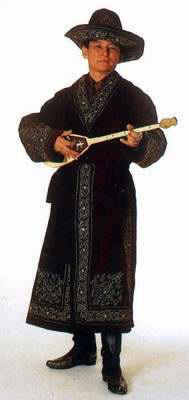

Women's clothes:
kоilеk is a tunic-shapedshirt-dress . Young women preferred red or gay-colored fabric, women of middle and elderly ages - fabrics of dark blue and white colour. Well-to-do Kazakh women made their dresses of silk, satin, velvet, brocade.
A collar of dresses was with buttons up to the neck, then it was edged with a turn-down collar, but from the middle of XIX century - with stand-up collar. Unmarried girls covered their breast with a special breastplate, but married women - with the breast part of the headdress. By the end of XIX century had been widely practiced a new cut of the dress - were made cut dresses with a bodice and a skirt cut in the waist. Until our days just this kind of the dress is considered to be traditional Kazakh. Dresses of the old cut usually were worn by elderly women.
Women and girls at home often only wore a dress, but sometimes put on a kamzol over it which on its cut was analogous to a men's, but more often without sleeves (or with short sleeves) and with the open collar , there were met kamzols with long sleeves . Besides long kamzols girls and young women wore short sleeveless jackets reaching to tne waist or the middle of the hips . Women's straight and wide dressing-gowns (shapan) with long sleeves differed from men's with making them of fabrics of bright colours. Dressing-gowns were decorated with a border of the fabric of other colour.
Rich women made their holiday "sha- pans" of expensive fabrics, decorated with braids (laces), embroidery and stripes of fur. A bride's dressing-gown which was a required part of her dowry (trousseau) was decorated particularly recherchely. Such a dressing-gown was made of cloth, velvet, satin, silk usually of red colour and also black or stripy Central Asian silk. A wedding dressing-gown was made with very long false sleeves, sewed together below, decorated with embroidery, fur of otter or beaver, edged with a patterned braid and lace. Only girls and married women of well-to-do families had special winter clothes ( kupi and ishik).
Women's footwear did not differ from men's. Girls and young women wore mainly boots etik, sometimes high (to 10 sm) heeled. Elderly women wore low-heeled boots, but preferred soft boots mesi and galoshes (rubbers) kebis.
The wedding headdresses of Kazakh brides were especially striking, tall caps with intricate filigree work and a diadem set with semi-precious stones, as well as pendants hanging from the temple and chin adornments.
As the population became more urbanized and more and more people began purchasing clothing, even the traditional costumes sewn at home were simpler and made of less opulent materials. Nowadays, the Kazakh national dress varies according to region.




